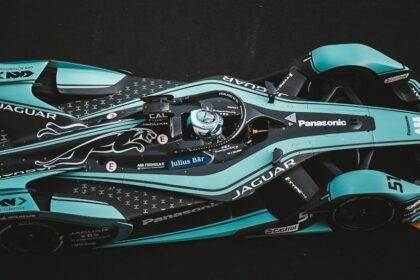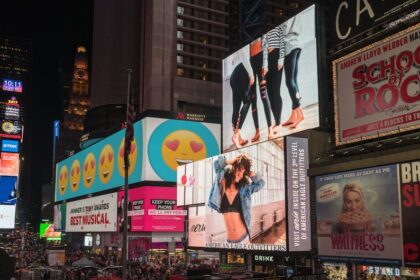Advanced LinkedIn Campaign Structuring
Understanding the foundational principles of advanced LinkedIn campaign structuring begins with acknowledging that a rigid, one-size-fits-all approach is inherently suboptimal for most organizations. The complexity of your LinkedIn Ads account should directly mirror the complexity of your business objectives, target audience segmentation, and the sales funnel stages you aim to influence. Moving beyond basic campaign setups, which often simply group ads by format or broad audience, necessitates a strategic re-evaluation of how campaigns, campaign groups, and individual ads interact to drive specific, measurable outcomes. This sophisticated approach centers on maximizing efficiency, optimizing budget allocation, and extracting granular performance insights.
At its core, advanced structuring acknowledges the hierarchy within the LinkedIn Ads platform: the Account serves as the overarching container, housing Campaign Groups, which in turn contain individual Campaigns, and finally, Ads reside within campaigns. Each layer offers a unique opportunity for organization, budget control, and reporting granularity. The “one campaign, one objective” rule, while a good starting point for beginners, evolves in advanced scenarios to “one campaign group, one overarching strategy,” allowing for multiple campaigns within that group to support distinct aspects of the strategy, each with its own objective. This distinction is crucial. For instance, a Campaign Group focused on “Enterprise ABM – Q3” might contain separate campaigns for “High-Value Account Nurturing (Video Views Objective),” “New Logo Acquisition – Decision Makers (Lead Gen Form Objective),” and “Retargeting Engaged Leads (Website Conversion Objective).” This structure provides immediate clarity on performance relative to a specific strategic goal.
Budget allocation philosophies also shift from simple top-down assignments to more dynamic, performance-based models. Instead of merely assigning a lump sum to the overall account, advanced strategists allocate budgets at the Campaign Group or even individual Campaign level, informed by historical performance, projected ROI, and the strategic importance of the target segment or objective. This could involve an agile approach where budgets are reallocated mid-flight based on real-time data, funnel velocity, or emerging opportunities. Understanding the inherent cost differences across various LinkedIn objectives (e.g., CPM for Brand Awareness often lower than CPL for Lead Generation) is vital for realistic budget setting within this refined framework.
Strategic Campaign Group Design: The Blueprint for Success
Campaign Group design is the strategic linchpin of an advanced LinkedIn Ads account. It dictates the high-level organization and influences how effectively you can manage, optimize, and report on your advertising efforts. Instead of defaulting to a flat structure, robust Campaign Groups are typically designed around one or more of the following methodologies, often in hybrid combinations:
-
Structuring by Business Unit or Service Line: For organizations with diverse product portfolios or distinct business units, separating Campaign Groups ensures clear budget accountability and performance tracking for each offering. A software company, for example, might have “CRM Software Campaign Group,” “ERP Solutions Campaign Group,” and “Cloud Services Campaign Group.” This allows product managers or business unit leads to easily review their specific ad performance without sifting through irrelevant data. It also prevents budget from one high-performing product cannibalizing spend meant for a newer or more niche offering. Within each business unit group, campaigns can then be structured by funnel stage or specific audience.
-
Structuring by Funnel Stage (Awareness, Consideration, Conversion, Loyalty): This is perhaps the most common and powerful advanced structuring method. Each Campaign Group represents a distinct stage of the buyer’s journey, ensuring that messaging, creative, and campaign objectives are perfectly aligned with the user’s intent at that stage.
- Awareness Group: Focuses on broad reach, brand storytelling, thought leadership. Campaigns within this group might use Video Views, Brand Awareness, or Engagement objectives, targeting larger, top-of-funnel (ToFu) audiences.
- Consideration Group: Aims to educate potential customers and generate interest in solutions. Campaigns might use Website Visits (to detailed product pages, case studies), Lead Generation Forms (for whitepapers, webinars), or Engagement (for interactive content). Audiences here are often more defined, perhaps including specific job functions or industries.
- Conversion Group: Designed to drive immediate action, such as demo requests, free trials, or direct sales. Campaigns typically leverage Website Conversions or Lead Generation Forms (for high-intent assets), targeting highly qualified, warm audiences like retargeting lists or high-value lookalikes.
- Loyalty/Advocacy Group: Focuses on customer retention, upsells, cross-sells, or encouraging referrals. Campaigns might use Website Visits (to customer success stories, new feature announcements) or Engagement objectives, targeting existing customer lists or engaging with customer communities.
-
Structuring by Audience Segment: When specific audience attributes are paramount, creating Campaign Groups around these segments provides unparalleled clarity. This is especially effective for Account-Based Marketing (ABM) strategies.
- Enterprise Accounts Group: Targeting specific large companies from a custom list.
- SMB Accounts Group: Focusing on small and medium-sized businesses with tailored messaging.
- Specific Persona Group (e.g., “CTOs in Manufacturing,” “HR Directors in Tech”): Highly granular targeting requires dedicated groups to monitor performance against that specific persona’s engagement and conversion rates.
- Geographic Groupings: For global campaigns, separate Campaign Groups per region (e.g., “EMEA Campaigns,” “APAC Campaigns,” “North America Campaigns”) allows for localized budget control, currency management, and region-specific messaging without cluttering the main account view.
-
Combining Methodologies: Hybrid Approaches: The most sophisticated LinkedIn Ads accounts typically employ a hybrid model. For example, you might have top-level Campaign Groups structured by Funnel Stage. Within the “Conversion” Campaign Group, you might then have separate campaigns structured by Audience Segment (e.g., “Conversion – Enterprise ABM List,” “Conversion – SMB Lookalikes”). Or, if your primary driver is ABM, your top-level groups might be Account Tiers (Tier 1, Tier 2, Tier 3), and within each tier, campaigns are structured by Funnel Stage. The key is to choose a top-level organizational principle that provides the most actionable insights for your specific business goals, then drill down with secondary structuring methods. This multi-dimensional approach enables highly refined targeting and performance analysis.
Deep Dive into Campaign-Level Structuring: Precision Execution
Once Campaign Groups are established, the next layer of complexity unfolds at the Campaign level. Each campaign must be meticulously designed with a singular, clear objective and a precisely defined audience segment. This granular control is where true optimization occurs.
-
Objective-Driven Campaigns: Aligning Action with Goal: LinkedIn offers various campaign objectives, and selecting the correct one is paramount. Advanced structuring often involves running multiple campaigns with different objectives against the same audience segment but with different creative and desired outcomes.
- Brand Awareness: Best for maximizing reach and impressions among a target audience. Campaigns here might focus on unique users reached or overall impressions. Bidding is typically CPM.
- Website Visits: Ideal for driving traffic to specific landing pages, blog posts, or resource hubs. Focus is on quality clicks and time on site. UTM parameters are essential here for tracking source and campaign effectiveness.
- Engagement: Designed to increase interactions with your content (likes, comments, shares, video views, followers). Useful for building community and demonstrating thought leadership. Campaigns often involve diverse content types.
- Video Views: Specifically for driving views of video content. Optimization centers on completion rates, not just initial views. This objective is crucial for video retargeting strategies.
- Lead Generation: Utilizes LinkedIn’s native lead generation forms, reducing friction by pre-populating fields. Critical for high-volume lead capture. Requires careful form field optimization and often CRM integration.
- Website Conversions: Tracks specific actions taken on your website after a click (e.g., demo requests, whitepaper downloads, purchases). Relies on the LinkedIn Insight Tag and well-defined conversion events. This is the cornerstone for performance-oriented campaigns.
- Job Applicants: Specialized objective for recruiting, integrating with LinkedIn’s application process or external ATS.
-
Audience Segmentation Strategies: The Art of Precision Targeting: The power of LinkedIn Ads lies in its rich professional data. Advanced strategies leverage this data to create hyper-targeted audience segments, often combining multiple attributes and employing exclusionary targeting.
- Matched Audiences: Leveraging Your Data
- Website Retargeting (Website Audiences): Dynamic segments based on pixel data. Advanced usage involves creating highly specific segments (e.g., “visited pricing page,” “viewed specific product demo,” “abandoned cart”). These can be layered with professional attributes for further refinement.
- Company Lists (Account-Based Marketing – ABM): Uploading a list of target company names (e.g., from your CRM or sales outreach list). This is foundational for ABM and allows for highly customized messaging. Advanced tactics involve segmenting these lists into tiers (e.g., Tier 1: dream accounts, Tier 2: strategic accounts) and creating separate campaigns for each tier with distinct budgets and messaging.
- Contact Lists (CRM Data/Email Lists): Uploading email addresses or LinkedIn profile URLs to target specific individuals. Excellent for nurturing existing leads, cross-selling to customers, or targeting specific personas. Crucial for connecting sales and marketing efforts.
- Lookalike Audiences: Created from existing matched audiences (website visitors, contact lists, lead gen form completions). Advanced usage focuses on the quality of the seed audience. For instance, creating a lookalike audience from your highest-converting leads or most profitable customers will yield better results than from general website visitors. Running tests with different lookalike percentages (e.g., 1%, 5%, 10%) can reveal optimal reach vs. relevance.
- Engagement Audiences: Building audiences based on how users have interacted with your content on LinkedIn:
- Video Viewers: Those who watched specific percentages (e.g., 25%, 50%, 75%) of your videos. Highly effective for sequential video storytelling or nurturing.
- Lead Gen Form Opens/Completers: Targeting those who opened but didn’t submit, or those who submitted (for follow-up/nurturing).
- Company Page Followers: Engaging your existing community.
- Event Attendees/Responders: Targeting those who expressed interest or attended your LinkedIn events.
- LinkedIn Attribute Targeting: Granular Professional Filters
- Job Function, Seniority, Title: Extremely powerful for reaching decision-makers or influencers. Advanced tactics involve combining these (e.g., “Marketing Director” AND “Seniority: Director” AND “Job Function: Marketing”).
- Company Size, Industry: Essential for B2B segmentation. Combining these creates niche audiences (e.g., “Software Industry” AND “Company Size: 500-1000 employees”).
- Skills: Target individuals based on skills listed on their profiles. Useful for highly specialized offerings (e.g., “Machine Learning,” “Cloud Computing”).
- Education: Target by alma mater, field of study, degree. Relevant for recruiting or certain B2B offerings.
- Group Membership: Target members of specific LinkedIn Groups, often indicating niche interests.
- Interests: Based on content engaged with. Can be broad or very specific. Use with caution as some interests can be quite generic.
- Exclusionary Targeting: Preventing Waste and Overlap: Just as important as who you include is who you exclude.
- Exclude existing customers: Prevent showing acquisition ads to current clients.
- Exclude recent converters: Prevent showing lead gen ads to those who just converted.
- Exclude competing companies: If using company targeting, exclude competitors.
- Exclude overlapping audiences: Use the “Audience Overlap” report in LinkedIn to identify where your defined audiences share significant portions of users. High overlap can lead to inefficient bidding and ad fatigue if not managed by exclusions or unique messaging. Creating distinct campaigns for overlapping audiences, or using exclusions to ensure each user only sees one ad from a specific campaign group, maximizes budget efficiency.
- Matched Audiences: Leveraging Your Data
-
Budgeting and Bidding Strategies (Advanced): Master Your Spend: Effective budget and bidding management are crucial for ROI, especially with a complex campaign structure.
- Automated vs. Manual Bidding:
- Automated (Maximum Delivery, Target Cost): Often good for scale and efficiency, especially with conversion objectives. LinkedIn’s algorithm optimizes delivery based on your objective. “Target Cost” is excellent for maintaining a consistent CPA/CPL.
- Manual (CPM/CPC): Provides granular control. Useful for highly specific objectives, small audiences, or when testing creative. For Brand Awareness (CPM), you manually bid on impressions. For Website Visits (CPC), you bid on clicks. Manual bidding requires more active monitoring and adjustment.
- Bid Adjustments for Specific Segments: Within a campaign targeting a broad audience, you might be able to adjust bids for specific sub-segments if performance data indicates a higher value from them. However, LinkedIn’s platform often encourages creating separate campaigns for truly distinct segments to gain full bid control.
- Experimenting with Different Bid Strategies Per Campaign: Don’t assume one bid strategy fits all. A Brand Awareness campaign might use Maximum Delivery CPM, while a Conversion campaign targeting a warm audience uses Target Cost CPL. A small, high-value ABM campaign might even benefit from manual bidding to ensure visibility.
- Budget Pacing and Forecasting: Beyond setting a daily or lifetime budget, understand LinkedIn’s pacing. If a campaign is under-spending, investigate audience size, bid competitiveness, or ad relevance. If over-spending, consider budget increases or bid adjustments. Use historical data to forecast future spend and performance.
- Bid Strategy for Different Funnel Stages: ToFu campaigns might prioritize reach (CPM), MoFu campaigns might focus on clicks or engagements (CPC/CPV), and BoFu campaigns will prioritize conversions (CPL/CPA). Your bidding strategy should reflect this priority.
- Lifetime vs. Daily Budgets: Lifetime budgets are suitable for fixed-period campaigns (e.g., an event promotion) where LinkedIn distributes spend over time. Daily budgets are for ongoing campaigns where you want consistent daily spend. For advanced structures, a combination is often used, with some evergreen campaigns on daily budgets and event-specific or time-bound campaigns on lifetime budgets.
- Automated vs. Manual Bidding:
Ad-Level Optimization within Campaigns: The Creative Edge
Even with perfect campaign structuring, poorly performing ads will undermine your efforts. Ad-level optimization focuses on the creative, messaging, and landing page experience, all tested rigorously within your defined campaign structure.
-
Ad Formats and Creative Strategy: Tailoring the Message
- Single Image Ads: Versatile, good for direct response. Test multiple images, headlines, and descriptions.
- Carousel Ads: Tell a story, showcase multiple products/features. Each card can have a different image/headline/landing page.
- Video Ads: Excellent for brand storytelling, product demos, thought leadership. Crucial for capturing attention and building engagement audiences. Test video length, first few seconds, and CTAs.
- Text Ads: Appear on the right rail or top of feed. Cost-effective for broad awareness or retargeting.
- Spotlight Ads/Follower Ads (Dynamic Ads): Personalized ads using LinkedIn profile data. Spotlight Ads promote a product/service/event. Follower Ads promote your Company Page. Highly engaging due to personalization.
- Lead Gen Forms: Native forms that capture leads without leaving LinkedIn. Essential for reducing friction and increasing conversion rates. Optimize form fields, privacy policy, and thank-you message.
- Message Ads (Sponsored InMail): Delivered directly to LinkedIn inboxes. Ideal for personalized outreach to highly qualified segments. Optimize subject lines, body copy, and CTAs. Be mindful of frequency caps.
- Conversation Ads: Interactive, choose-your-own-path experiences within the LinkedIn inbox. Excellent for guiding users through a decision tree, offering multiple resources, or qualifying leads. Requires careful planning of the conversation flow.
- A/B Testing Frameworks: This is non-negotiable for advanced optimization.
- Hypothesis-Driven: Always start with a hypothesis (e.g., “Changing the CTA from ‘Learn More’ to ‘Get a Demo’ will increase conversion rate by X% for this audience”).
- Single Variable Testing: Test one element at a time (e.g., headline, image, CTA, body copy). This ensures you know what caused a performance change.
- Statistical Significance: Don’t make decisions on small data sets. Use LinkedIn’s Campaign Experiments or external calculators to determine if results are statistically significant.
- Iterative Refinement: A/B testing is a continuous process. Learn from winners, apply insights, and test new variations. A campaign group focused on “Conversion” might have multiple ad variations within each campaign, constantly being tested and refreshed.
- Iterative Creative Refinement: Ads have a shelf life. Monitor ad fatigue (decreasing CTR, increasing CPC/CPL). Refresh creative regularly, often every 2-4 weeks for smaller, high-frequency audiences, or less frequently for larger audiences.
-
Landing Page Experience: The ad is only half the battle. Your landing page must be relevant, fast, and mobile-friendly.
- Relevance: The landing page content must directly align with the ad’s promise and the user’s expectation.
- Speed: Pages that load slowly lead to high bounce rates and wasted ad spend.
- Mobile-Friendliness: A significant portion of LinkedIn traffic is mobile. Ensure your landing pages are fully responsive and optimized for smaller screens.
-
Call-to-Action (CTA) Optimization: Your CTA should be clear, concise, and compelling.
- Clarity: Users should know exactly what action you want them to take.
- Urgency (where appropriate): Phrases like “Limited Time Offer” or “Download Now” can boost conversions.
- Placement: Prominently display CTAs on the landing page, especially above the fold.
- Testing CTAs: A/B test different CTA text and button colors/styles.
Advanced Tracking, Measurement, and Reporting: The Data Backbone
A sophisticated campaign structure is meaningless without equally sophisticated tracking and reporting. This allows you to attribute success, identify bottlenecks, and make data-driven decisions.
-
LinkedIn Insight Tag Implementation: Beyond the Basics: The Insight Tag is your pixel.
- Event-Specific Tracking: Don’t just track page views. Set up custom events for key actions (e.g., “Form Submitted – Contact Us,” “Video Watched – Product Demo,” “Trial Started”). These custom events are crucial for optimizing conversion campaigns and building granular retargeting audiences.
- Custom Event Parameters: Pass additional data with your events (e.g., lead value, product ID). This enhances reporting and allows for more nuanced audience segmentation.
-
UTM Parameter Standardization: The Attribution Compass: Consistent and robust UTM parameters are vital for tracking campaign performance in Google Analytics and other analytics platforms.
- Consistent Naming Conventions: Establish clear, non-ambiguous naming conventions for
utm_source,utm_medium,utm_campaign,utm_content, andutm_term.utm_source:linkedinutm_medium:paid_social(orcpcif you prefer specific bid types)utm_campaign: Should reflect your Campaign Group and Campaign names (e.g.,ABM_Enterprise_Q3_LeadGen_CampaignName). This allows you to roll up data by your internal structure.utm_content: Ad creative name or ID.utm_term: Keywords (less relevant for LinkedIn, but can be used for audience segment if desired).
- Automated vs. Manual UTMs: While LinkedIn provides some auto-tagging, manual UTMs often offer more control and ensure consistency across all your marketing channels.
- Consistent Naming Conventions: Establish clear, non-ambiguous naming conventions for
-
Offline Conversions Upload: Bridging the Gap: For B2B sales cycles, many conversions happen offline (e.g., a phone call, a signed contract). LinkedIn allows you to upload offline conversion data.
- CRM Integration: Ideally, integrate your CRM with LinkedIn (via partners or custom API) to automatically push lead status updates and sales-qualified/won opportunities back into LinkedIn Ads. This allows LinkedIn’s algorithm to optimize for true revenue events, not just initial lead forms.
- Manual Uploads: For simpler setups, manually upload CSVs of conversions with associated LinkedIn click IDs or matched audience data. This closes the loop on attribution.
-
Attribution Models: Assigning Credit Wisely: Different attribution models give credit to different touchpoints in the customer journey.
- Last-Touch: All credit to the final ad click. Simple, but ignores earlier interactions.
- First-Touch: All credit to the very first ad click. Useful for understanding initial awareness.
- Linear: Credit equally distributed across all touchpoints.
- Time Decay: More recent touchpoints get more credit.
- Position-Based (U-shaped): More credit to first and last touch, with remaining distributed among middle touches.
- Choosing the Right Model: Your choice depends on your business goals. For branding, first-touch might be relevant. For direct response, last-touch. For complex B2B sales cycles, time decay or position-based often provide a more holistic view. LinkedIn’s native reporting typically defaults to last-touch, so integrating with a robust analytics platform is key for multi-touch attribution.
-
Custom Dashboard Creation: Beyond Standard Reports: While LinkedIn’s reporting is good, custom dashboards (e.g., in Google Data Studio, Tableau, Power BI) allow you to integrate LinkedIn data with CRM data, website analytics, and other marketing channels.
- Key Performance Indicators (KPIs): Define KPIs relevant to each Campaign Group and Campaign objective (e.g., ToFu: reach, video view rate; MoFu: MQLs, CPL; BoFu: SQLs, closed-won revenue, CPA).
- Visualize Your Structure: Design dashboards that mirror your Campaign Group and Campaign hierarchy, allowing for easy drill-down into performance specifics.
-
Campaign Experimentation: A/B Testing Beyond Ads: LinkedIn’s Campaign Experiments feature allows you to A/B test structural changes or bid strategies.
- Test different bid strategies for the same audience.
- Compare the performance of two different audience segments for the same objective.
- Validate the impact of a specific exclusion strategy.
- This moves beyond just creative testing and validates fundamental structural decisions.
-
Reporting Frequency and Depth:
- Daily Checks: Monitor budget pacing, immediate performance dips/spikes, and identify any critical issues.
- Weekly Deep Dives: Analyze performance trends, identify underperforming ads/audiences, test new hypotheses, and optimize bids.
- Monthly Strategic Reviews: Evaluate Campaign Group performance against overarching business goals, allocate budgets for the next period, and identify opportunities for scaling or new initiatives.
- Leveraging LinkedIn’s Analytics: Utilize the platform’s native tools like Performance breakdown (by demographic, company, job title, etc.), Trend analysis, and Cross-campaign insights to refine targeting and creative.
Scaling and Maintaining Advanced Structures: Operational Excellence
A sophisticated structure requires ongoing maintenance and operational rigor to ensure its effectiveness.
-
Automation Tools and APIs: As your account grows, manual management becomes unwieldy.
- Third-Party Integrations: Tools like Smartly.io, Adverity, Funnel.io can automate budget optimization, ad rotation, reporting, and even campaign creation based on rules or dynamic feeds.
- LinkedIn Marketing API: For highly customized solutions, direct API integration allows for programmatic management of campaigns, ads, and reporting data. This is suitable for large enterprises with significant development resources.
-
Naming Conventions: The Unsung Hero: A consistent, logical naming convention for Campaign Groups, Campaigns, and Ads is paramount for navigability and reporting.
- Standardized Format: Adopt a format like
[CampaignGroup_Type]_[FunnelStage]_[AudienceSegment]_[Objective]_[Geo]_[Date/Version](e.g.,ABM_Enterprise_ToFu_VideoViews_NA_Q3_V1). - Clarity and Conciseness: Names should be descriptive enough to immediately understand the campaign’s purpose without opening it.
- Consistency: Ensure everyone on the team adheres to the convention. This prevents confusion and streamlines analysis.
- Standardized Format: Adopt a format like
-
Regular Audits and Refinements:
- Performance Audits: Quarterly or bi-annual deep dives into overall account performance. Identify campaigns with declining ROI, analyze audience saturation, and pinpoint opportunities for optimization.
- Audience Refresh: Target audiences can become saturated or stale. Regularly review and refresh your Matched Audiences and explore new LinkedIn attribute combinations.
- Creative Refresh: As noted, combat ad fatigue by continuously introducing new creative variations.
- Budget Reallocation: Based on performance data and changing business priorities, reallocate budgets between Campaign Groups and Campaigns.
-
Cross-Platform Integration: LinkedIn in the Ecosystem: LinkedIn Ads rarely operates in isolation.
- Integrated Strategy: Ensure your LinkedIn efforts align with your broader marketing strategy, including SEO, content marketing, email marketing, and other paid channels (Google Ads, Facebook Ads).
- Audience Sync: Leverage integrations to sync audiences between platforms (e.g., exporting LinkedIn Lead Gen leads to an email nurturing sequence, using website visitors from Google Analytics to build LinkedIn retargeting lists).
- Attribution Modeling: Use a multi-touch attribution model across all channels to understand LinkedIn’s true contribution to the customer journey.
-
Team Collaboration: Shared Understanding: For large teams, ensure all stakeholders (marketers, sales, product, leadership) understand the campaign structure and its rationale. This fosters alignment, streamlines communication, and ensures consistent execution. Document your chosen structure and naming conventions for easy onboarding of new team members.
Troubleshooting and Common Pitfalls in Advanced Structuring
Even the most meticulously structured campaigns can encounter issues. Proactive troubleshooting is key to maintaining performance.
-
Audience Too Small/Too Broad:
- Too Small: Your bids might not be competitive enough, or your audience filters are too restrictive. Consider broadening your audience slightly, increasing bids, or using audience expansion features if relevant. For ABM, if your list is genuinely small, accept lower impression volume and focus on high engagement.
- Too Broad: Leads to wasted spend on irrelevant impressions. Refine targeting, add exclusions, or split the audience into more granular campaigns. Check the Audience Overlap report.
-
Ad Fatigue: Characterized by declining CTR, rising CPC/CPL, and stable or increasing frequency.
- Solution: Refresh creative, pause underperforming ads, test new ad formats, or slightly expand your audience. Review frequency metrics at the ad and campaign level.
-
Budget Not Spending:
- Causes: Audience too small, bids too low, ad creatives paused/disapproved, or budget limit is too restrictive for the target audience size.
- Solution: Increase bids, expand audience slightly, check ad status, or increase daily/lifetime budget.
-
High CPC/CPL:
- Causes: Low ad relevance score, poor creative, high competition in the target audience, low click-through rates.
- Solution: Improve ad creative and messaging to be more relevant to the audience, test new CTAs, optimize landing page experience, or refine audience targeting to a more engaged segment. Review your bid strategy; sometimes a slightly higher bid can lead to better placement and lower effective CPA if it generates more conversions.
-
Conversion Tracking Issues:
- Causes: Insight Tag not correctly implemented, conversion event not firing, URL changes on landing page, or GTM container issues.
- Solution: Use LinkedIn’s Insight Tag Helper browser extension, verify event firing in Google Tag Manager or direct source code, and regularly test conversion paths. Cross-reference with your CRM data.
-
Overlapping Audiences: Running multiple campaigns that target largely the same group of people without proper exclusions.
- Consequence: Increased competition against yourself, higher costs, ad fatigue.
- Solution: Use the Audience Overlap report. Implement exclusions between campaigns or Campaign Groups to ensure distinct reach. Alternatively, design campaigns that intentionally overlap for specific sequential messaging (e.g., one ad for awareness, the next for consideration, shown to the same person).
-
Poor Creative Performance: Low CTR, low engagement, high bounce rates on landing pages.
- Causes: Irrelevant messaging, unappealing visuals, weak CTAs, mismatch between ad and landing page.
- Solution: Continuous A/B testing of headlines, images, video content, ad copy, and CTAs. Focus on benefits, not just features. Ensure strong visual appeal and clear value proposition.
By adopting these advanced structuring principles and operational best practices, organizations can transform their LinkedIn advertising from a simple spend channel into a highly sophisticated, data-driven revenue engine. The key is to move beyond tactical campaign creation and embrace a strategic framework that aligns advertising efforts directly with broader business objectives, leveraging LinkedIn’s unique targeting capabilities for maximum impact and efficiency.










